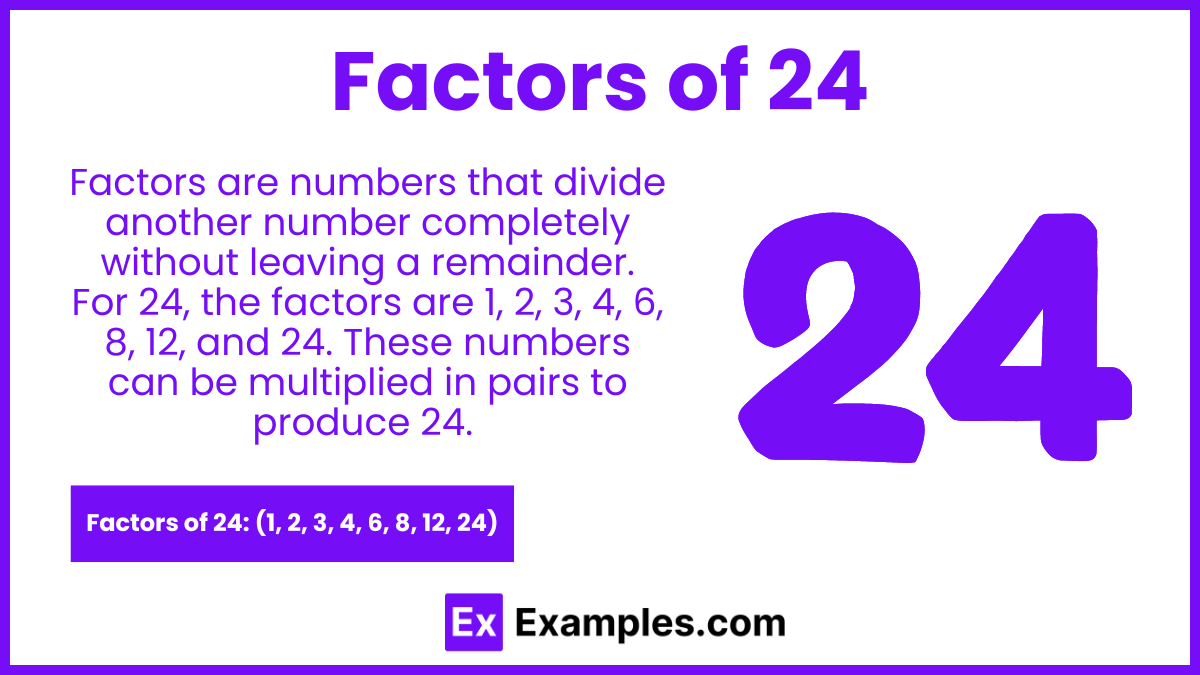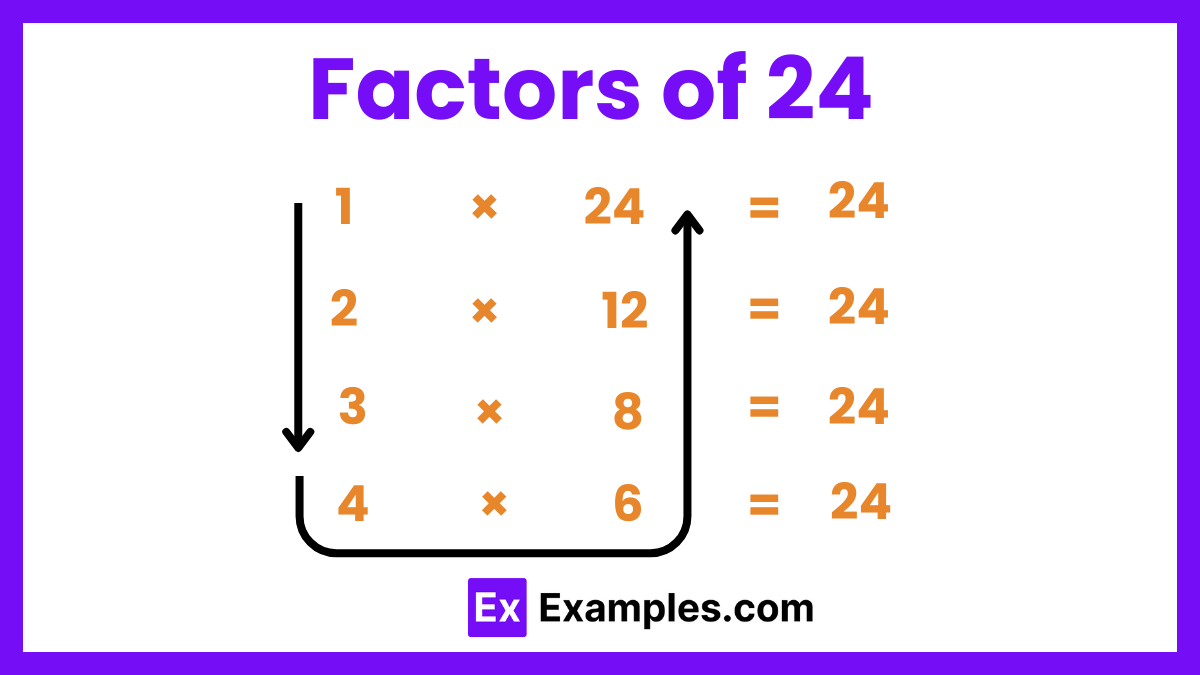What are the factors of 24?
1, 2, 4, 6, 8, 12, 24
1, 2, 3, 4, 6, 12, 24
1, 2, 4, 6, 10, 12, 24
1, 2, 5, 6, 8, 12, 24

The factors of 24 is an essential math skill that helps in various arithmetic operations. Factors are numbers that can be evenly divided into another number without leaving a remainder. For 24, these include both positive and negative numbers. This guide will explore the factors of 24, how to find them, and their significance. Whether you’re a student tackling homework or a math enthusiast brushing up on your skills, knowing the factors of 24 and how to determine them is fundamental. Read on to learn about prime factorization, common factor pairs, and more.

The factors of 24 are the numbers that divide 24 without leaving a remainder. These include 1, 2, 3, 4, 6, 8, 12, and 24. Additionally, each of these numbers can be paired with another factor to multiply and result in 24, such as (1, 24), (2, 12), (3, 8), and (4, 6). Understanding these factors helps in various mathematical applications, from simplifying fractions to solving complex equations.
Calculating the prime factors of 24 involves breaking down the number into the prime numbers that multiply together to result in 24. Prime factors are the building blocks of a number, consisting only of prime numbers, which are numbers greater than 1 that have no positive divisors other than 1 and themselves. Here’s how to find the prime factors of 24:
Understanding the factors of 24 can simplify many mathematical tasks, from basic arithmetic to more complex problem-solving. Here are some helpful tips for working with the factors of 24:
To verify, list the factors and multiply each pair to ensure they result in 24. Check for completeness by confirming no factors are missed.
To find the sum, add all the factors of 24: 1 + 2 + 3 + 4 + 6 + 8 + 12 + 24 = 60.
To simplify a fraction, find the common factors of the numerator and denominator. For example, 24/36 simplifies to 2/3 by dividing both by their GCF, which is 12.
To find pairs of numbers that multiply together to give 24, we look for factor pairs. Here are the pairs of two factors that equal 24:
(1, 24): 1 × 24 = 24, (2, 12): 2 × 12 = 24, (3, 8): 3 × 8 = 24, (4, 6): 4 × 6 = 24, (-1, -24): -1 × -24 = 24, (-2, -12): -2 × -12 = 24, (-3, -8): -3 × -8 = 24, (-4, -6): -4 × -6 = 24.
Factors of 24 help find the LCM with another number by identifying the highest power of each prime factor involved. For example, the LCM of 24 and 18 (prime factors 2³×3 and 2×3²) is 2³×3²=72
The prime factors of 24 are 2 and 3. The prime factorization of 24 is 23×3.
Text prompt
Add Tone
10 Examples of Public speaking
20 Examples of Gas lighting
What are the factors of 24?
1, 2, 4, 6, 8, 12, 24
1, 2, 3, 4, 6, 12, 24
1, 2, 4, 6, 10, 12, 24
1, 2, 5, 6, 8, 12, 24
Which of the following is not a factor of 24?
5
8
12
15
What is the sum of all factors of 24?
36
42
50
60
What is the smallest factor of 24?
1
2
3
4
What is the largest factor of 24?
6
8
12
24
Which two factors of 24 multiply to give 12?
2 and 6
3 and 4
4 and 6
2 and 8
Which factor of 24 is also a prime number?
1
2
4
8
If you divide 24 by 8, what is the quotient?
2
3
4
6
What are the prime factors of 24?
2 and 3
2 and 4
2, 2, 2, and 3
2, 2, 3, and 6
Which of the following numbers is a factor of 24 but not of 12?
6
8
11
15
Before you leave, take our quick quiz to enhance your learning!

